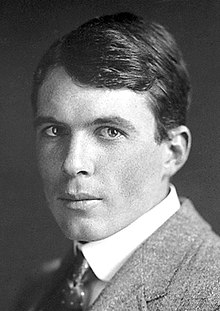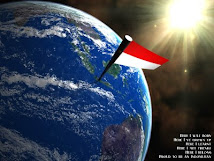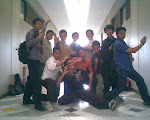Central for Research and Development for Winning
Nobel Prize in Physics at Indonesia
Nobel Fisika Indonesia
|
|
|
|
|
|
|
|
|
|
|
|
|
|
|
|
|
|
|
|
|
|
|
|
|
|
|
|
|
|
|
|
|
|
|
|
|
|
|
|
|
|
|
|
|
| "Untuk penemuan difraksi sinar Xnya dengan kristal." |
"for his discovery of the diffraction of X-rays by crystals"
|
|---|
| Germany |
Frankfurt-on-the-Main University
Frankfurt-on-the-Main, Germany |
b. 1879
d. 1960 |
|
|
Photos: Copyright © The Nobel Foundation
Career
In 1906, Laue became a
Privatdozent in Berlin and an assistant to Planck. He also met
Albert Einstein for the first time; they became friends and Laue went on to contribute to the acceptance and development of Einstein’s
theory of relativity. Laue continued as assistant to Planck until 1909. In Berlin, he worked on the application of entropy to radiation fields and on the thermodynamic significance of the coherence of light waves.
[7][9]From 1909 to 1912, Laue was a
Privatdozent at the Institute for Theoretical Physics, under
Arnold Sommerfeld, at LMU. During the 1911 Christmas recess and in January 1912,
Paul Peter Ewald was finishing the writing of his doctoral thesis under Sommerfeld. It was on a walk through the
Englischer Garten in
Munich in January, that Ewald told Laue about his thesis topic. The wavelengths of concern to Ewald were in the visible region of the spectrum and hence much larger than the spacing between the resonators in Ewald’s crystal model. Laue seemed distracted and wanted to know what would be the effect if much smaller wavelengths were considered. In June, Sommerfeld reported to the Physikalische Gesellschaft of Göttingen on the successful diffraction of x-rays by Laue, Paul Knipping and Walter Friedrich at LMU, for which Laue would be awarded the
Nobel Prize in Physics, in 1914. While at Munich, he wrote the first volume of his book on relativity during the period 1910 to 1911.
[8][9][10][11]
In 1912, Laue was called to the
University of Zurich as an extraordinarius professor of physics. In 1913, his father was raised to the ranks of hereditary nobility; Laue then became 'Max
von Laue'.
[9]In 1919, Laue was called to the University of Berlin as ordinarius professor of theoretical physics, a position he held until 1943, when he was declared emeritus, with his consent and one year before the mandatory retirement age. At the university in 1919, other notables were
Walther Nernst,
Fritz Haber, and
James Franck. Laue, as one of the organizers of the weekly Berlin Physics Colloquium, typically sat in the front row with Nernst and Einstein, who would come over from the
Kaiser-Wilhelm-Institut für Physik in
Berlin-Dahlem, where he was the director. Among Laue’s notable students at the university were
Leó Szilárd,
Fritz London, Max Kohler, and Erna Weber. In 1921, he published the second volume of his book on relativity.
[6][8][12][13]As a consultant to the
Physikalisch-Technische Reichsanstalt (PTR), Laue met
Walther Meissner who was working there on
superconductivity. Meissner had discovered that a weak magnetic field decays rapidly to zero in the interior of a superconductor, which is known as the
Meissner effect. Laue showed in 1932 that the threshold of the applied magnetic field which destroys superconductivity varies with the shape of the body. Laue published a total of 12 papers and a book on superconductivity. One of the papers was co-authored with
Fritz London and his brother Heinz.
[7][14][15][16] Meissner published a biography on Laue in 1960.
[17]
The
Kaiser-Wilhelm Gesellschaft zur Förderung der Wissenschaften (Today: Max-Planck Gesellschaft zur Förderung der Wissenschaften) was founded in 1911. Its purpose was to promote the sciences by founding and maintaining research institutes. One such institute was the
Kaiser-Wilhelm Institut für Physik (KWIP) founded in Berlin-Dahlem in 1914, with Einstein as director. Laue was a trustee of the institute from 1917, and in 1922 he was appointed deputy director, whereupon Laue took over the administrative duties from Einstein. Einstein was traveling abroad when
Adolf Hitler became Chancellor in January 1933, and Einstein did not return to Germany. Laue then became acting director of the KWIP, a position he held until 1946 or 1948, except for the period 1935 to 1939, when
Peter Debye was director. In 1943, to avoid casualties to the personnel, the KWIP moved to
Hechingen. It was at Hechingen that Laue wrote his book on the history of physics
Geschichte der Physik, which was eventually translated into seven other languages.
[7][18][19]Laue was in opposition to
National Socialism in general and their
Deutsche Physik in particular – the former persecuted the Jews, in general, and the latter, among other things, put down Einstein’s theory of relativity as
Jewish physics. Laue secretly helped scientific colleagues persecuted by National Socialist policies to emigrate from Germany, but he also openly opposed them. An address on 18 September 1933 at the opening of the physics convention in
Würzburg, opposition to Johannes Stark, an obituary note on
Fritz Haber in 1934, and attendance at a commemoration for Haber are examples which clearly illustrate Laue’s courageous, open opposition:
- Laue, as chairman of the Deutsche Physikalische Gesellschaft, gave the opening address at the 1933 physics convention. In it, he compared the persecution of Galileo and the oppression of his scientific views on the Solar theory of Copernicus to the then conflict and persecution over the theory of relativity by the proponents of Deutsche Physik, against the work of Einstein, labeled “Jewish physics.”
- Johannes Stark, who had received the Nobel Prize in Physics in 1919, wished to become the Führer of German physics and was a proponent of Deutsche Physik. Against the unanimous advice of those consulted, Stark was appointed President of the PTR in May 1933. However, Laue successfully blocked Stark’s regular membership in the Prussian Academy of Sciences.
- Haber received the Nobel Prize in Chemistry in 1918. In spite of this and his many other contributions to Germany, he was forced to emigrate from Germany as a result of the Law for the Restoration of the Professional Civil Service, which removed Jews from their jobs. Laue’s obituary note[20] praising Haber and comparing his forced emigration to the expulsion of Themistocles from Athens was a direct affront to the policies of National Socialism.
- In connection with Haber, Planck and Laue organized a commemoration event held in Berlin-Dahlem on 29 January 1935, the first anniversary of Haber’s death – attendance at the event by professors in the civil service had been expressly forbidden by the government. While many scientific and technical personnel were represented at the memorial by their wives, Laue and Wolfgang Heubner were the only two professors to attend.[21][22] This was yet another blatant demonstration of Laue’s opposition to National Socialism. The date of the first anniversary of Haber’s death was also one day before the second anniversary of National Socialism seizing power in Germany, thus further increasing the affront given by holding the event.
The speech and the obituary note earned Laue government reprimands. Furthermore, in response to Laue blocking Stark’s regular membership in the Prussian Academy of Sciences, Stark, in December 1933, had Laue sacked from his position as advisor to the PTR, which Laue had held since 1925. Chapters 4 and 5, in Welker’s
Nazi Science: Myth, Truth, and the Atomic Bomb, present a more detailed account of the struggle by Laue and Planck against the Nazi takeover of the Prussian Academy of Sciences.
[14][23][24][25][26][27]On 23 April 1945, French troops entered Hechingen, followed the next day by a contingent of
Operation Alsos – an operation to investigate the German nuclear energy effort, seize equipment, and prevent German scientists from being captured by the Soviets. The scientific advisor to the Operation was the Dutch-American physicist
Samuel Goudsmit, who, adorned with a steel helmet, appeared at Laue’s home. Laue was taken into custody and taken to Huntington, England, and interned at
Farm Hall, with other scientists thought to be involved in nuclear research and development.
[14]While incarcerated, Laue was a reminder to the other detainees that one could survive the Nazi reign without having “compromised”; this alienated him from others being detained.
[29] During his incarceration, Laue wrote a paper on the absorption of x-rays under the interference conditions, and it was later published in
Acta Crystallographica.
[14] On 2 October 1945, Laue,
Otto Hahn, and
Werner Heisenberg, were taken to meet with
Henry Hallett Dale, president of the
Royal Society, and other members of the Society. There, Laue was invited to attend the 9 November 1945 Royal Society meeting in memory of the German physicist
Wilhelm Conrad Röntgen, who discovered
X-rays; permission was, however, not forthcoming from the military authorities detaining von Laue.
[14]Laue was returned to Germany early in 1946. He went back to being acting director of the KWIP, which had been moved to Göttingen. It was also in 1946 that the Kaiser-Wilhelm Gesellschaft was renamed the Max-Planck Gesellschaft, and, likewise, the Kaiser-Wilhelm Institut für Physik became the Max-Planck Institut für Physik. Laue also became an adjunct professor at the
University of Göttingen. In addition to his administrative and teaching responsibilities, Laue wrote his book on superconductivity,
Theorie der Supraleitung, and revised his books on electron diffraction,
Materiewellen und ihre Interferenzen, and the first volume of his two-volume book on relativity.
[8][14][30]In July 1946, Laue went back to England, only four months after having been interned there, to attend an international conference on crystallography. This was a distinct honor, as he was the only German invited to attend. He was extended many courtesies by the British officer who escorted him there and back, and a well-known English crystallographer as his host; Laue was even allowed to wander around London on his own free will.
[14]After the war, there was much to be done in re-establishing and organizing German scientific endeavors. Laue participated in some key roles. In 1946, he initiated the founding of the Deutsche Physikalische Gesellschaft in only the
British Occupation Zone, as the
Allied Control Council would not initially allow organizations across occupation zone boundaries. During the war, the PTR had been dispersed; von Laue, from 1946 to 1948, worked on its re-unification across three zones and its location at new facilities in
Braunschweig. Additionally, it took on a new name as the
Physikalisch-Technische Bundesanstalt, but administration was not taken over by Germany until after the formation of
West Germany on 23 May 1949. Circa 1948, the President of the
American Physical Society asked Laue to report on the status of physics in Germany; his report was published in 1949 in the
American Journal of Physics.
[31] In 1950, Laue participated in the creation of the Verband Deutscher Physikalischer Gesellschaften, formerly affiliated under the Nordwestdeutsche Physikalische Gesellschaft.
[8][14][30]In April 1951, Laue became director of the Max-Planck Institut für physikalische Chemie und Elektrochemie, a position he held until 1959. In 1953, at the request of Laue, the Institute was renamed the Fritz Haber Institut für physikalische Chemie und Elektrochemie der Max-Planck Gesellschaft.
[14][32]
Presentation
The following account of von Laue's work is by Professor G. Granqvist, Chairman of the Nobel Committee for Physics of
the Royal Swedish Academy of Sciences*Seldom indeed can a discovery in the field of physics have given rise to such intensive research work as did that of
Röntgen in 1896, when he proved the existence of a new form of rays which had hitherto been unknown and which, owing to their remarkable characteristics, have since achieved a position of the greatest importance, not only in the field of pure physics but also in connection with research work throughout the other sciences.
Notwithstanding the considerable number of tests which have been carried out since their discovery and directed toward investigation of the true nature of X-rays, it was not until over a decade had passed that their true nature had finally been elucidated.
Already during the first tests it was established that not even the strongest magnetic fields were able to alter the direction of the rays. It was equally impossible to prove the existence of a refraction on transfer of the rays from one medium to another. If the X-rays were of a corpuscular nature they could not, therefore, be carriers of an electrical charge, as is the case with other known rays of corpuscular nature. If, therefore, we wish to disregard matter which has no electrical charge, it is necessary to assume that the particles, whose motion is characteristic for the X-rays, bear two charges of opposite sign, one of which neutralizes the other. On the other hand, from the fact that there was no evidence of refraction of the X-rays, it was possible to assume that, should they consist of a transverse wave motion - as is the case with light waves - the relevant wavelength would have to be very small, as for very small wavelengths, according to the theory of dispersion of light, the refractive index would approach unity.
After hurriedly discarding an hypothesis which had been expounded initially, according to which X-rays were believed to consist of longitudinal wave motions in ether, opinions as to their actual nature were divided according to the above two alternatives. Nevertheless an objective presentation could only describe them as a type of impulse of an unknown nature.
On the basis of an hypothesis expounded as early as 1896 by Stokes and Wiechert this impulse was believed to consist of a disturbance which occurs in the ether when the cathode-ray particle, i.e. a forward-rushing electron, is impeded on colliding with molecules of matter. This disturbance or impulse was believed to propagate in all directions at the speed of light from the ether surrounding the electron. In each part of the space this disturbance was maintained for a period of identical duration to that in which the electron was impeded. This period of time, multiplied by the speed of light, was described as the impulse width, a quantity which, if the nature of the X-rays were the same as that of the light rays, would coincide with the wavelength.
According to that theory the X-ray impulse, which originates perpendicular to the cathode-ray bundle by which it is excited, is alleged to be completely polarized. The evidence of this type of polarization was first produced by
Barkla in 1905, but, contrary to the theory, the polarization was not complete but only partial. While it was possible to explain the causative factors of this aberration the characteristics of the polarization were not adequate to prove the existence of a transverse undulation.
Once Dorn had succeeded, in 1897, in determining the fraction of the energy of the impeded electrons which is converted to X-rays, W. Wien was able to calculate the impulse width which, according to his figures, amounted to approximately 10-10 cm, or only one hundred-thousandth of the shortest known wavelengths of light. The short impulse width thus determined could explain the lack of success with previous diffraction tests which had been carried out on slits with X-rays, for even with the narrowest slit the diffraction phenomenon, which is produced by such small impulse widths or wavelengths, would have to lie just about at the limits of possible observation. And it may, in actual fact, only be said even of the most accurate of these tests conducted by Walter and Pohl that they render diffraction highly probable. From the research carried out by these scientists it would meanwhile seem to follow that the upper limit for the impulse width of X-rays lies at 4 x 10-9.
This was the situation when von Laue placed a research medium of the highest import at the disposal of science by virtue of his epoch-making discovery of the interference of X-rays and, at the same time, proved that X-rays, as is the case with light rays, consist of progressive transversal waves.
Previous research had indicated, as is mentioned in the foregoing, that it was highly probable that, if X-rays are wave motions of the same type as light rays, then their wavelengths would have to be of an order of 10-9 cm. In order to obtain clear interference phenomena of the same type as those which are caused when light rays pass a grating it was necessary for the distance between the grating slits to be of an order of 10-8 cm. But this is approximately the distance between the molecules of a solid body and it was in this manner that von Laue arrived at the idea of employing, as a diffraction grating, a solid body with regularly-arranged molecules, e.g. a crystal. As early as 1850 Bravais had introduced into crystallography the assumption that the atoms composing the various crystals are arranged in regular groups, so-called three-dimensional lattices or space-lattices, whose constants could be calculated with the aid of crystallographic data.
However, the theoretical basis of a space-lattice was unknown and thus it was first necessary for von Laue to develop this theory if else the investigation were to have a value. This he did mainly according to the same approximations as those conventional to the science of optics as applied to normal one-dimensional lattices.
Von Laue left the execution of the experimental work in the hands of W. Friedrich and P. Knipping. The apparatus which they employed consisted of a lead box into which they admitted a thin bundle of X-rays which they directed so as to fall upon a precisely oriented crystal. Sensitized film was positioned both behind and at the sides of the crystal. Already the preparatory tests showed that the intensity maxima which had been anticipated by von Laue became evident in the form of blackened spots on the film positioned behind the crystal.
From the grouping shown by these intensity maxima in accordance with the requirements of the theory, as established, for such photograms of various crystals and from the degree of clarity with which they have been reproduced, it follows that they are an interference phenomenon. Absorption tests have shown that the rays which give rise to the points of interference are actually X-rays, and from this von Laue has deduced with a high degree of certainty that the X-rays which cause intensity maxima on irradiation of a crystal have the character of a wave motion. However, the same is required also for those rays employed for irradiation purposes, for, as he says, were they of a corpuscular nature, coherent oscillations could only arise from those atoms set into motion by the identical corpuscle and these atoms would have to form together one whole agglomerate whose dimensions would tee largest in the direction of radiation. However, contrary to what was indicated in the experiment, this would result in the intensity maxima consisting of irregular concentric circles.
As a result of von Laue's discovery of the diffraction of X-rays in crystals proof was thus established that these light waves are of very small wavelengths. However, this discovery also resulted in the most important discoveries in the field of crystallography. It is now possible to determine the position of atoms in crystals and much important knowledge has been gained in this connection. We can anticipate further discoveries of equal note in the future. It is thus rendered likely that experimental research into the influence of temperature upon diffraction will provide the solution to the question of a zero-point energy, or will at least be of some assistance in arriving at a solution to this problem, as the temperature factor assumes a different value according to whether a zero-point energy exists or not. However, the direct results of this discovery of diffraction are of no less importance: it is now possible to subject the X-ray spectra to direct examination, their line spectra can even be photographed, and science has thus been enriched by a method of research whose full implications can not yet be fully appreciated.
If it is permissible to evaluate a human discovery according to the fruits which it bears then there are not many discoveries ranking on a par with that made by von Laue. If one reflects further on the fact that only a few years have passed since his discovery was first published it may surely be said that, when awarding the Nobel Prize for Physics, the Royal Academy of Sciences will presumably seldom, if ever, be in a position of such close agreement with the letter of the Testament as on this occasion in deciding to award the Nobel Prize for Physics for the year 1914 to Professor Max von Laue, for his discovery of the diffraction of X-rays in crystals.
* The Nobel Prize in Physics 1914 was announced on November 11, 1915.
From
Nobel Lectures, Physics 1901-1921, Elsevier Publishing Company, Amsterdam, 1967
Copyright © The Nobel Foundation 1914
Sumber:
1. Wikipedia
2. Nobel Prize Org.
Ucapan Terima Kasih:
1. DEPDIKNAS Republik Indonesia
2. Kementrian Riset dan Teknologi Indonesia
3. Lembaga Ilmu Pengetahuan Indonesia (LIPI)
4. Akademi Ilmu Pengetahuan Indonesia
5. Tim Olimpiade Fisika Indonesia
Disusun Ulang Oleh:
Arip Nurahman
Pendidikan Fisika, FPMIPA, Universitas Pendidikan Indonesia
&
Follower Open Course Ware at MIT-Harvard University, USA.
Semoga Bermanfaat dan Terima Kasih

























